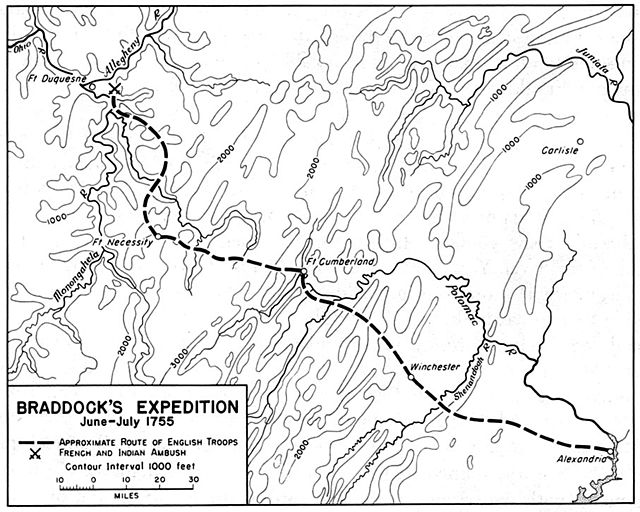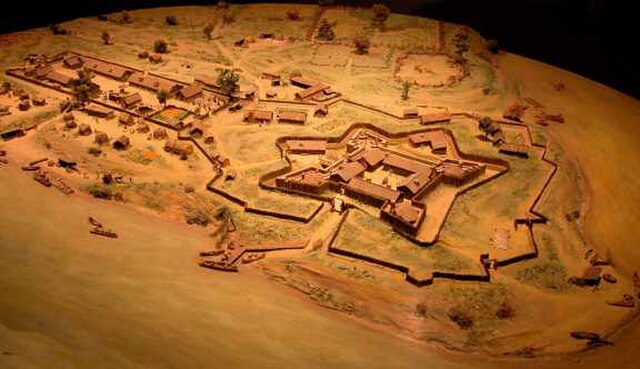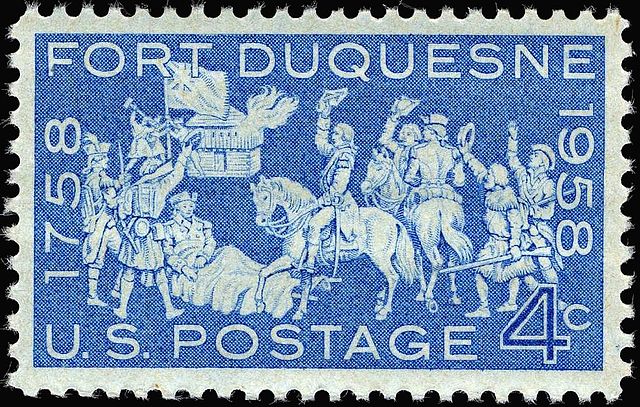The Braddock expedition, also called Braddock's campaign or Braddock's Defeat, was a British military expedition which attempted to capture Fort Duquesne from the French in the summer of 1755, during the French and Indian War of 1754 to 1763. The British troops suffered defeat at the Battle of the Monongahela on July 9, 1755, and the survivors retreated. The expedition takes its name from General Edward Braddock (1695–1755), who led the British forces and died in the effort. Braddock's defeat was a major setback for the British in the early stages of the war with France; John Mack Faragher characterises it as one of the most disastrous defeats for the British in the 18th century.
Route of the Braddock Expedition
Braddock Road trace near Fort Necessity, Pennsylvania.
19th-century engraving of the wounding of Major-General Braddock at the Battle of the Monongahela.
Plan of the Battle at the beginning of action on July 9, 1755 (1830 engraving)
Fort Duquesne was a fort established by the French in 1754, at the confluence of the Allegheny and Monongahela rivers. It was later taken over by the British, and later the Americans, and developed as Pittsburgh in the U.S. state of Pennsylvania. Fort Duquesne was destroyed by the French before its British conquest during the Seven Years' War, known as the French and Indian War on the North American front. The British replaced it, building Fort Pitt between 1759 and 1761. The site of both forts is now occupied by Point State Park, where the outlines of the two forts have been laid in brick.
Fort Duquesne in Pittsburgh
Model of Fort Duquesne
Point State Park in Downtown Pittsburgh, where bricks mark the outline of the former site of Fort Duquesne
Fort Duquesne commemorative stamp, 1958 issue








